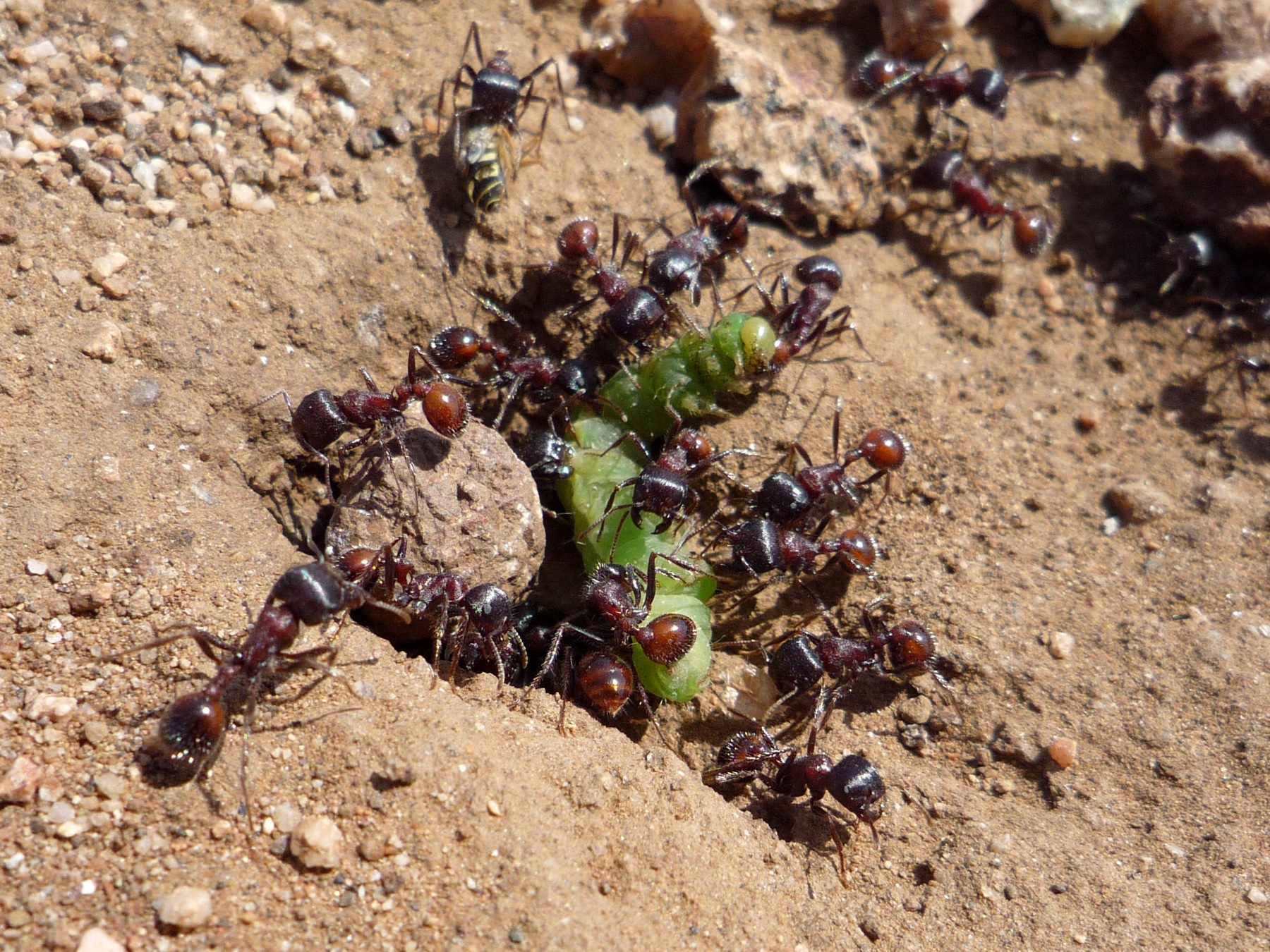Interactions
The California harvester ant plays an important role within the
desert ecosystem. It has a multitude of interactions with other
species, both harmful and beneficial. Predators of Pogonomyrmex californicus include
the horned lizard Phrynosoma spp., ant lions, termites,
blind snakes, over 25 species of birds, solpugids, beetles,
asilids, reduviids, wasps, and a few species of spiders (De Vita
1979; MacMahon et al. 2000). The main reason that
P. californicus ant colonies attract so many predators
(for example, the red imported fire ant Solenopsis invicta
and the Argentine ant Linepithemahumile) is because
they are long-lived, sessile, and have many workers (MacMahon et al.
2000). The ant competes with other granivores (seed predators),
such as the genera Aphaenogaster, Messor, and
Pheidole, for seeds
(MacMahon et al. 2000).

Worker ants collect seeds for food independently of one another by “harvesting” the plants
through the usage of their mandibles to cut off the seeds (Navajo
Nature 2010). A California
harvester ant forager can remove up to 100 percent of the available
seeds that it most prefers, causing changes in plants’ community
structure by changing the species’ relative abundance (MacMahon
et
al. 2000). MacMahon et al. also revealed in their 2000
article that a forager alters energy and materials distributions
between food webs both above- and below-ground. The energy
distribution above-ground is driven mostly by the ingestion of live
biomass, and below-ground, the energy distribution is driven
primarily by the ingestion of dead biomass; in addition to live
biomass being ingested, it can become part of the detrital food web
after being moved from the soil surface to below-ground nests
(MacMahon
et
al. 2000).
Red harvester ants, such as Pogonomyrmex californicus,
were quite important in the religious and medical systems of the
native peoples of southern and south-central California as
hallucinogens (Groark 1996). Groark researched that they were eaten
alive in large amounts so that the people would be unresponsive to
external stimuli and experience visions (1996). This finding is
quite important in that it is the first well-researched example of
an insect being used as a hallucinogenic agent, though it was
also taken both internally and externally to treat rheumatism, heavy
colds, paralysis, body pain, stomachaches, and many types of
gynecological disorders (Groark 1996).
Preventative medicine and obtaining euphoria-inducing hallucinogenic
effects were not the only reasons for ingesting these
ants, however. Supernatural ailments were also believed by the
indigenous peoples to be cured through this process (Groark 1996).
Groark commented in the same 1996 article that this is because the ants
contain venom that can cause a chilling sensation to be felt moving
upward from the sting site. Near this sting site can linger intense
pain for several hours. It is important to note that only females
have the
ability to sting, since the apparatus used for stinging is
not found in males; the female ant does this by holding tightly to its victim with its mandibles and
administering the sting, through which venom is released that contains
many different kinds of proteins, enzymes, histamines, and other
chemicals (Pogolumina 2010).
Go back to the Reproduction page Go to the Home page Go on to the Facts page